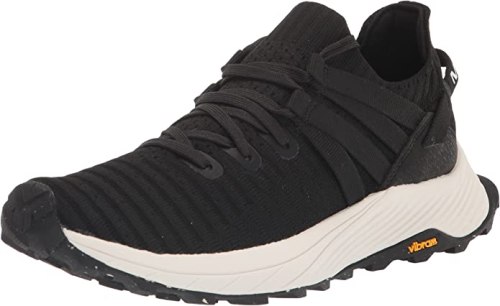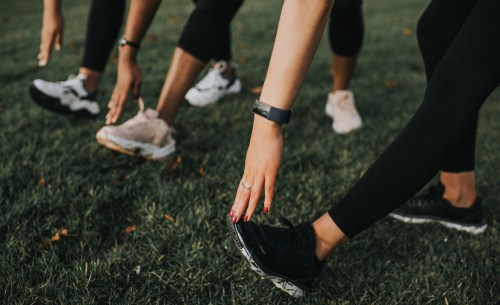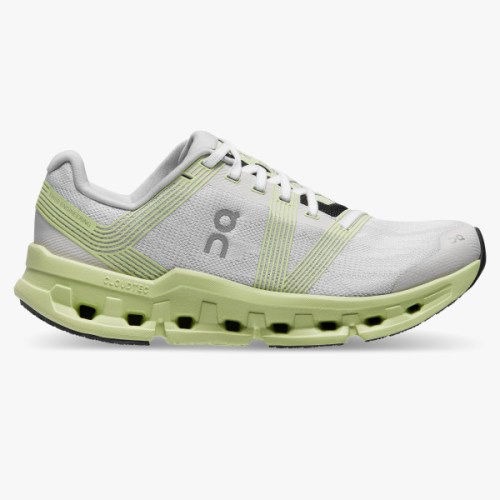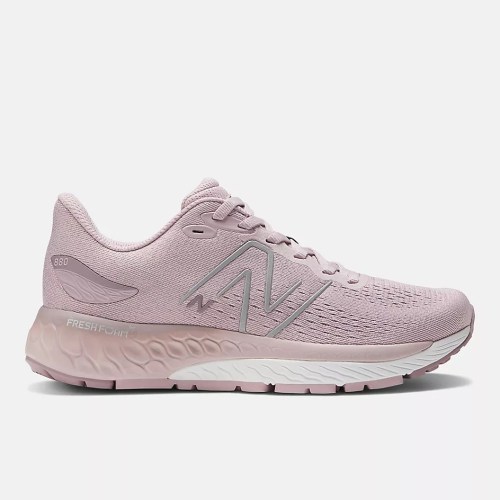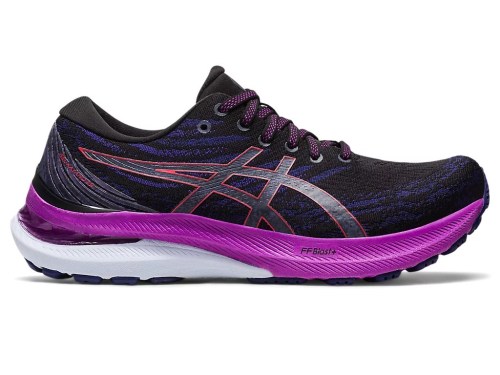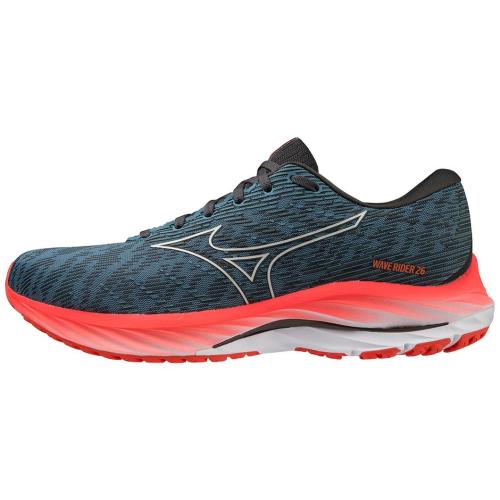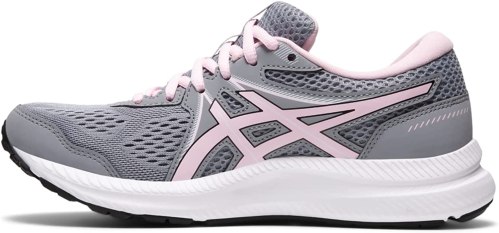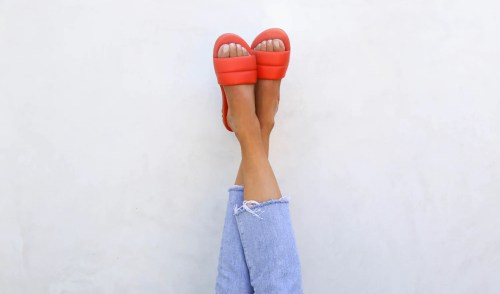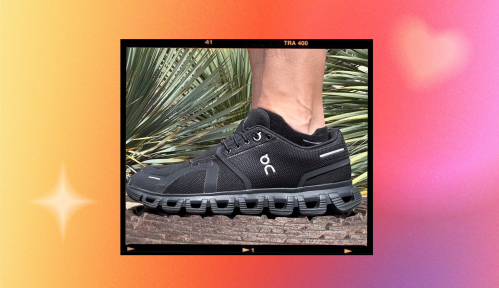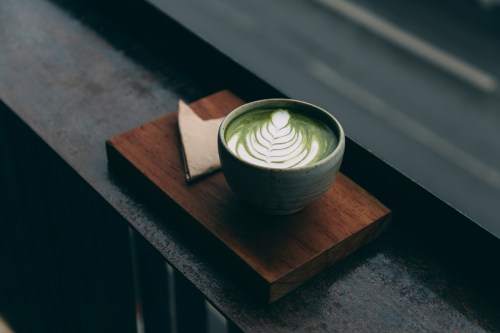Our editors independently select these products. Making a purchase through our links may earn Well+Good a commission
On your mark. Get set… Wait! Are you even wearing the right shoes for this? Before you start your first run, we need to make sure that you’re in the right running shoes, first. For a new runner, it’s important that you don’t just throw on any random pair of shoes and hope for the best. You need to find a shoe that fits your foot and provides you the support that you need for the long (and short) run—and prevents any injuries from happening.
Experts in This Article
running coach and founder of Equinox’s Precision Run program
orthopedic surgeon based in Atlanta, Georgia
The best running shoes for beginners, at a glance
- Best Overall: Brooks, Ghost 15 ($140)
- Best Support: Hoka Clifton 8 ($112)
- Best Adaptive: Merrell, Embark ($110)
- Best Stability: Saucony, Omni 20 ($130)
- Best Breathable: On, Cloudgo ($150)
- Best Colors: New Balance Fresh Foam X 880v12 ($70)
- Best Cushion: Asics, Gel-Kayano 29 ($160)
- Best for Distance Running: Altra, Torin 6 ($150)
- Best for Ankle Support: Mizuno, Wave Rider 26 ($140)
- Best Budget: Asics GEL-Contend 7 ($40)
- Best for Treadmill: Hoka Mach 5 ($140)
If you’ve been feeling overwhelmed by the vast selection of running shoes out there, we totally understand. Everyone starts somewhere, so for advice on what best running shoes for beginners are, we’ve asked an Equinox trainer and orthopedic surgeon for their top tips.
What should beginner runners look for in a running shoe?
As with any shoe, it’s gotta fit your foot first. “When looking for an ideal pair of running shoes, be sure to find a pair that’s comfortable (check out these most comfortable running shoes), lightweight, and provides sufficient cushioning. It should offer adequate arch support and ample heel-to-toe drop (not too much or too little),” orthopedic surgeon Kellie K. Middleton, MD, tells Well+Good.
Founder of Precision Run by Equinox and certified personal trainer, David Siik, agrees and adds that the running shoe you try first might not be the running shoe you stick with once you find out your personal running style. “As you discover what kind of runner you are, you can play with more specific shoes,” Siik tells Well+Good. He continues, “You may decide you like long, slower runs and for that a good cushion shoe may be your choice. Or, you may decide you like interval running and then you’ll enjoy a light, springy fast shoe with maybe a little less cushion.” Overall, he recommends to start with a well cushioned, flexible shoe and go from there.
Another pro-tip? You’ll want to get your size, plus a half-size up—and then see which one feels the most comfortable. Depending on the brand and style, some shoes are a bit too tight, and you want them to be snug (so they don’t come flying off), yet you should still be able to have enough space to wiggle your toes in the toe box. The last thing you need is for a shoe to be so tight on you, you feel like your feet are going numb as you run—nor do you want a loose shoe, which could cause instability and toe bruising.
What type of running shoes are best for beginners?
“I always recommend starting with something you’re familiar with. If there is a brand of athletic shoe you feel most comfortable in, there is a good chance they have a running shoe that you’ll also like,” Siik suggests. However, if you’re completely new to the world of running shoes, don’t fret. Siik’s advice is to go to a running shoe store (or visit a running store’s online shop) and “try on [or order] no less than three different brands.” In the end, you should opt for a shoe that feels the best on your foot unless otherwise recommended by a doctor.
As for Dr. Middleton, she agrees that trying on different brands and styles is key to finding your own “glass slipper.” Think Cinderella.
Tips for beginner runners, from the pros
Once you don your first pair of running shoes it’ll be time for you to take to the treadmill, track, or trail, so Siik and Dr. Middleton both have some advice to help you put your best running foot forward.
“Run less than you think you can! Ease yourself into running by starting small,” Siik exclaims. The personal trainer says that running twice weekly is a great place to start. Also, if it’s available to you, try to find an in-person running class so that you can spend time with a pro to show you the ropes… or runs.
Dr. Middleton notes that you should start with shorter runs to help your body get used to the motions. “Start with 15-20 minute runs. Eventually, build up to 30 minutes as you gain more experience and fitness,” she says. The orthopedic surgeon continues, “If it is safe, running outdoors is ideal as it provides the most natural and varied terrain. If you must run indoors, find a flat surface and use a treadmill or track.” A treadmill will be easier on your joints, so that’s something to keep in mind.
Above all else, both experts agree that pacing yourself—and stretching pre and post run—is key to fine tuning your trips on the treadmill to your body. And avoiding injuries like sprained ankles and shin splints—which are very common if you overextend yourself too fast! Listen to your body’s cues and don’t push yourself to the brink of exhaustion. You’ve got this.
9 best running shoes for beginners
Brooks, Ghost 15 — $140.00
Brooks is probably the most popular running shoe brand around, and that’s because its design is tried and true. The no-frills design prioritizes comfort, support, and maximizes performance for every type of runner, no matter how far along you are in your running journey. And don’t worry, the Ghost 15 won’t disappear on your feet while you run—you’ll feel the cushioned support from the get-go. Meant for everyday runs (according to the product page), this balanced running shoe with a segmented crash pad will keep your joints happy from the ankle up.
Recommended by Siik, we understand why the Ghost 15 made his cut. The combination of a breathable upper, ample cushion, and a smooth heel-to-toe drop make for a great running shoe for a running novice.
Read our full review of the Brooks Ghost 15 here.
Material: Air mesh, rubber
Sizes available: 5-12, plus wide sizes
Pros:
- They maximize performance.
- They are constructed with lots of cushion.
- They come in wide sizes
Cons:
- They aren’t the most budget-friendly.
Hoka Clifton 8 — $112.00
The Hoka Clifton 8 running shoe is a fan-favorite (and a W+G editor-favorite) for a reason. It’s great for all runners—especially those new to the treadmill, road, or wherever you choose to run. It features a mesh upper, extended pull tab, and rubber that can withstand friction. It’s especially a great shoe to use if the pavement is your only option for running and you want to protect your joints (that’s thanks to Hoka’s marshmallow-like cushioning that make it stand out from the running shoe crowd). The American Podiatric Medical Association has also backed this particular style.
The Hoka Clifton 8 is a Siik recommendation, too. He considers this running shoe one of his favorite “neutral” shoes—perfect for those new to running.
Read our full review of the Hoka Clifton 8 here.
Material: Textile, rubber
Sizes available: 6-11
Pros:
- They offer lots of support and cushion.
- They’re a great choice for treadmill runners.
- They have rubber soles with good traction.
Cons:
- They have a chunkier sole which might not be ideal for everyone.
Merrell, Embark — $110.00
Crave a running shoe that adapts to your environment? Then Embark (ha!) on a running journey with this style made with partially-recycled materials. These second-skin sneakers won’t weigh you down as your start to navigate your next running path.
Embark has a foam midsole, close-to-the-foot knit upper, and textured outsole that will keep your foot supported with each stride. According to Dr. Middleton, this running shoe follows her recommendation of trying a running shoe that has cushioning and a good heel-to-toe drop.
Material: Recycled mesh lining, rubber
Sizes available: 5-15
Pros:
- They have an adaptive design for most terrain.
- They come in wide sizes.
- They have an ultra-lightweight design.
Cons:
- They don’t come in bright colors.
Saucony, Omni 20 — $91.00
Three words to describe Saucony’s Omni 20? Stable. Fitted. Cushioned. The American Podiatric Medical Association (per the product page) has given this design its seal of approval, meaning this running shoe supports your foot’s overall health—according to the association’s standards.
When you’re starting to run, you need to ensure that your foot won’t feel tired after 15 minutes because it’s been fighting for its life within the shoe. The Omni 20 features an extended medial post that will support your foot’s natural alignment. Reach for this design if you’re someone looking for the “full-support” package.
Material: Textile, rubber
Sizes available: 5-12, wide sizes available
Pros:
- They come in wide sizes.
- They fit really well.
- They have excellent stability.
Cons:
- They don’t have the sleekest design.
On, Cloudgo — $150.00
Cloudgo is the beginner-friendly running shoe from trendy sneaker brand On. This style boasts its iconic vents along with a sleek upper and mid-level cushioning to provide a steady running experience for a new runner.
Labeled a “neutral” shoe on the style’s product page, Cloudgo falls in line with what Siik recommends as a great place to start with a running shoe. “I would recommend leaning toward a well cushioned, flexible shoe to start with. These are often labeled as a ‘neutral’ running shoe,” the Equinox trainer says.
Material: Recycled polyester
Sizes available: 5-11
Pros:
- They have vents for breathability.
- They have lots of cushion.
- They feature a flexible design.
Cons:
- They aren’t very budget-friendly.
New Balance Fresh Foam X 880v12 — $105.00
Just from the shape of the outsole alone, it’s a no brainer why this New Balance running shoe made the list. The contoured outer portion of this sneaker is made to guide your foot on the ground to ensure your first run is off to a well-supported start.
Another Siik recommendation, the Fresh Foam 880 running shoes definitely pass his cushion and stability standard. With a double-layer of top-bed and midsole foam, these sneakers will put a stable spring in your step.
Read our full review on the best New Balance running shoes here.
Material: Mesh, rubber
Sizes available: 5-18
Pros:
- They come in lots of fun, bright colors.
- They cost under $100.
- They have an impressive size range, including narrow and extra-wide.
Pros:
- Some customers say the toe box is a little short.
Asics, Gel-Kayano 29 — $160.00
Asics’s Gel-Kayano 29 is great for the beginner who wants cushion to be their middle name. Meant for road running, this style provides maximum cushioning and neutral stability.
In the same way that Siik recommends starting your journey with a running shoe that has neutral stability with ample cushioning, so does Dr. Middleton. “A neutral cushioning or stability shoe is best for most beginning runners,” the orthopedic surgeon says. And, this shoe delivers on both of those recs.
Material: Knit, rubber
Sizes available: 5-13
Pros:
- They have excellent cushion.
- They come in lots of different colors.
- They come in wide sizes.
Cons:
- They cost more than $150.
Altra, Torin 6 — $150.00
Backed by the American Podiatric Medical Association (according to the product page) Altra’s Torin is built to run with you. Containing a layer of cushioning specifically designed to offer a proper heel-to-toe drop, Altra designed these shoes for the long-haul.
Torin 6 is a cushioned, ergonomically designed running shoe meant to support its runner to the best of its ability. So, if you’re new to running but are hesitant to start because of flimsy sneakers, try this style out before your next run.
Material: Mesh, rubber
Sizes available: 5-11
Pros:
- They’re specifically designed for a proper heal-to-toe drop.
- They’re excellent for distance running.
- They’re durable.
Cons:
- They don’t come in wide sizes.
Mizuno, Wave Rider 26 — $140.00
Mizuno’s Wave Rider 26 packs a cushioned midsole, breathable upper, and extra cushion around the ankle into a beginner friendly running shoe that’s under 10-oz. Its contoured outsole is designed to propel you forward, so it will help you crush all your first runs while preventing you reaching a premature level of fatigue.
Material: Foam, rubber, mesh
Sizes available: 6-12
Pros:
- They have extra cushion around the ankles.
- They’re designed to prevent fatigue.
- They’re lightweight.
Cons:
- They don’t come in wide sizes.
Asics GEL-Contend 7 — $40.00
If you’re a beginner runner and don’t want to invest too much into a pair of sneakers, you can still find a quality pair in the Asics GEL-Contend 7, which podiatric reconstruction surgeon Dr. Yolanda Ragland, DPM recommends. These Asics running shoes are built for low-mileage and Ragland loves them because they support neutral to under pronation and have a rearfoot gel cushioning for added comfort. Plus, these running shoes cost less than $50, making them one of the best options for a cheap running shoe that doesn’t sacrifice quality.
Material: Mesh
Sizes available: 5-13
Pros:
- They come in wide sizes.
- They have a budget-friendly price tag and high-quality construction.
- They feature rearfoot gel for added comfort.
Cons:
- They have low mileage so they might not be ideal for distance runners.
Hoka Mach 5 — $135.00
The Hoka Mach 5 is another running shoe Ragland recommends for the best running shoes for beginners. “From treading the treadmill to pounding the pavement, its outer sole is layered with PROFLY/EVA foam technology, creating a spring-like propulsion and a buffer for heal impact,” she explains. These shoes are great for distance runners and can work particularly well for those who prefer to jog on a treadmill.
Material: Textile, EVA
Sizes available: 5-11
Pros:
- They come in wide sizes.
- They’re lightweight.
- They boast excellent traction.
Cons:
- They are pricey.
Sign up for the Well+Good SHOP Newsletter
Get exclusive deals on wellness, beauty, fitness, and food products that have been hand-picked by our editors.
Got it, you've been added to our email list.



